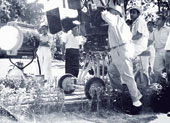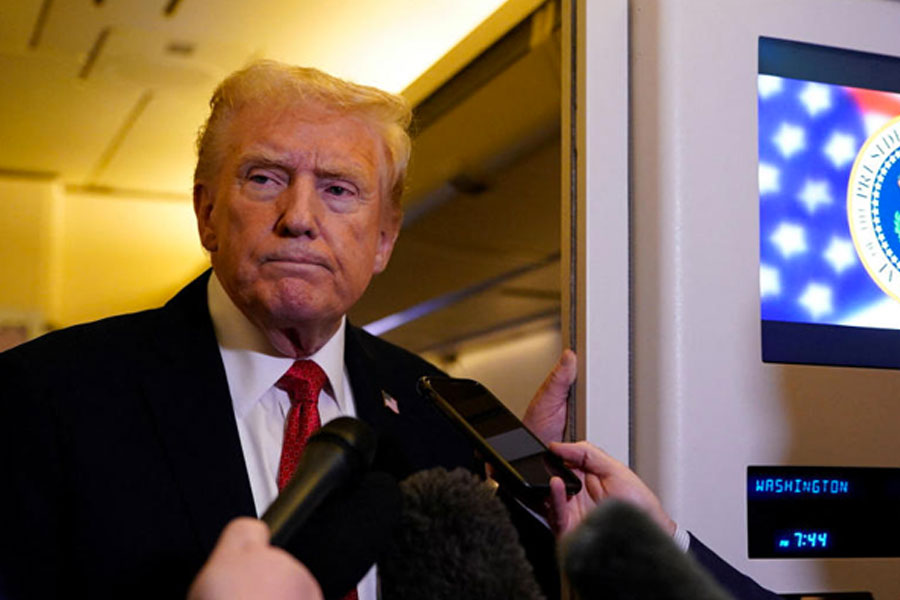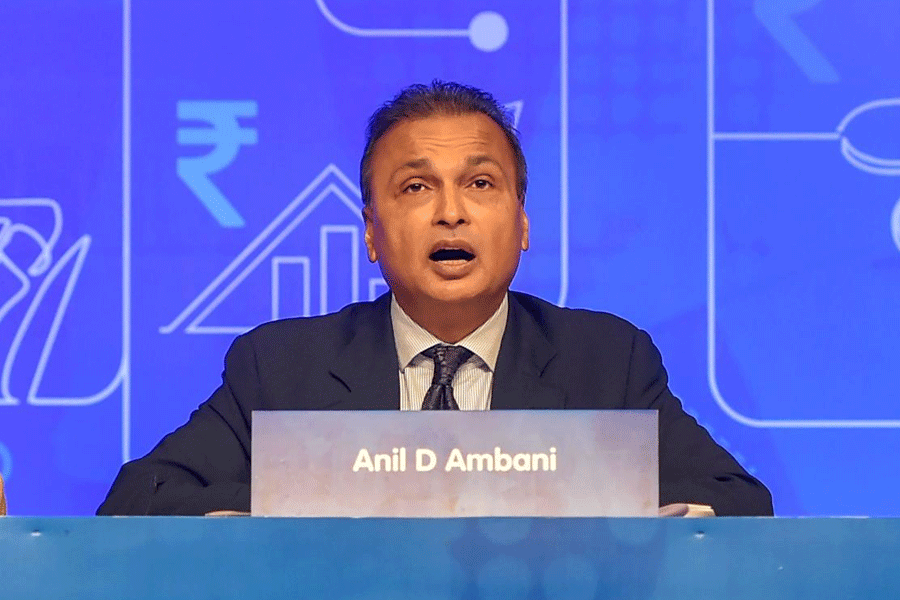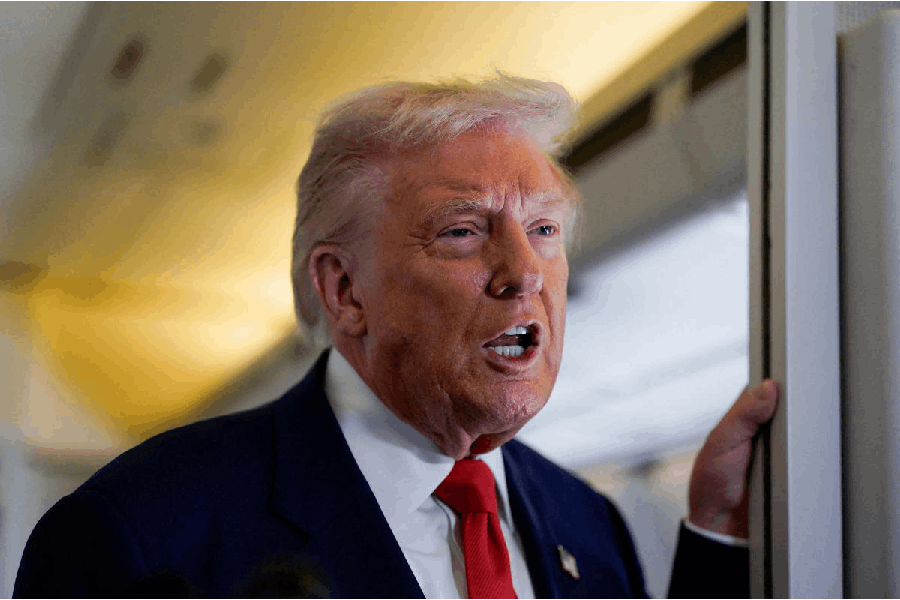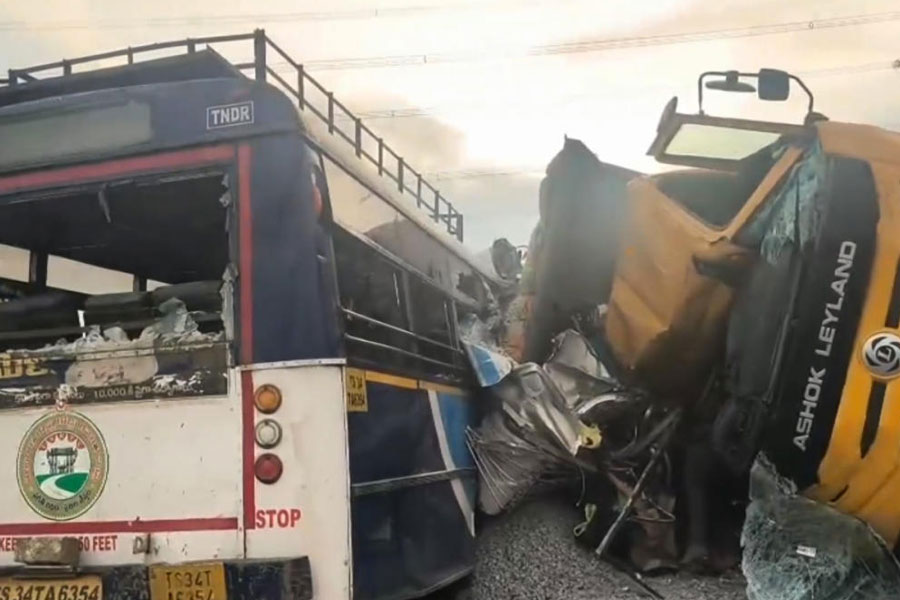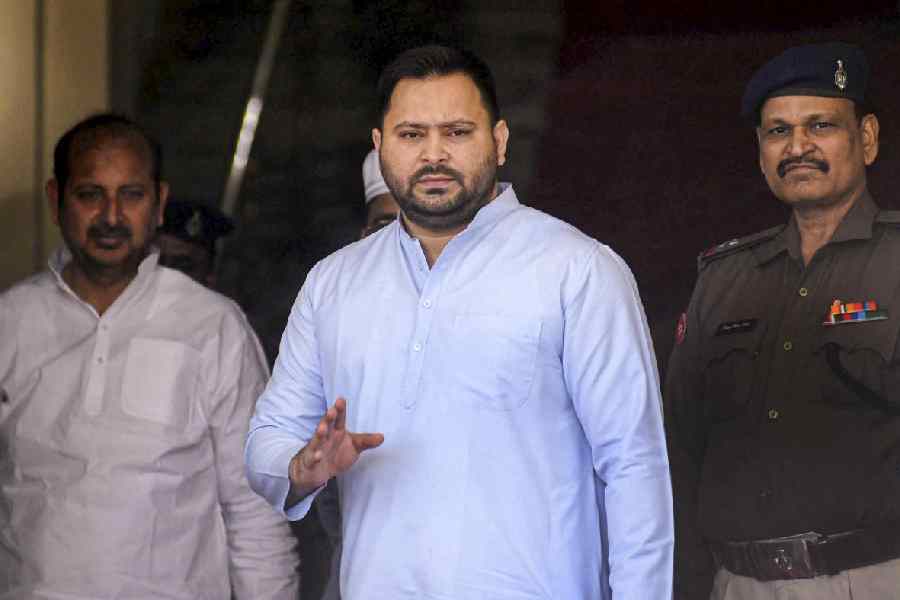 |
 |
| Sengupta (sitting) with Renoir at the shooting of The River. (Below) Sengupta now. Picture by Aranya Sen |
Film lovers in the city may not remember Ramananda Sengupta. The frail man of 91 is the subject of a recent documentary. A prolific cinematographer, he had worked with big names of Indian cinema. And one of the biggest names of world cinema.
Sengupta shot Ritwik Ghatak’s Nagarik and 61 other films, including old Bengali hits Nishithe, Dakghar, Bindur Chhele, Kankabatir Ghat, Personal Assistant, Shilpi and Bandhu. He had also worked closely with Jean Renoir when he came to Calcutta to shoot The River.
As the ever-smiling man tries to recall the past, sitting in his two-storey Golf Club residence, he finds it difficult to remember everything. But through his halting speech a different era comes alive, especially life with Renoir around.
Sengupta had studied in Santiniketan as a child — he is one of the few people who can recall meeting Tagore — and those years shaped his sensibility and drew him naturally to the aesthetics of cinema at a time when names like Chaplin, Kurosawa, Hitchcock, Howard Hawks and Frank Capra were associated with it.
“My first break was in 1938 when I joined Film Corporation of India in Calcutta as an assistant cameraman,” Sengupta says. This was after he had applied for a railways job in Chennai. His passion brought him back to the city, and to cinema.
“I went to Bimal Roy’s New Theatres where I was asked to go to Film Corporation.” Sengupta was told there was no vacancy. So he worked for free as an assistant cameraman. Sengupta worked as a full-time cinematographer first in Ardhendu Mukherjee’s Purbaraag in 1946.
The turning point came when Renoir, the famous French director, came to Calcutta in 1948 for a recce and “artiste shoot” (cast selection) for The River. In Renoir’s first colour film, shot on location, the Ganges is a metaphor for the ebb and flow of life. Martin Scorsese called it “one of the two most beautiful colour films ever made”.
“I was the operating cameraman,” says Sengupta. He handled the camera, while Renoir’s nephew Claude Renoir was director of photography..
The nonagenarian has a vivid memory of working with Renoir. As he turns the pages of his photo album and rifles through Renoir’s letters, he remembers the day when the director visited his home and liked the red sari that Sengupta’s wife was wearing. It was used in the film.
Sengupta recounts the sensitivity with which Renoir looked at India and its famed poverty. “Renoir was looking for some Indian faces as extras. He was introduced to some poor, crippled men. He rejected them, saying India would be misrepresented through them,” says the cinematographer. Renoir felt Indian gestures — and postures — were significant. The director felt that sitting cross-legged showed a certain peacefulness.
“It was the greatest experience of my life working with him and I think without Renoir, Pather Panchali would not have been possible,” he holds.
“Even after working with Renoir, he did not get the recognition that he deserved,” says Abhijit Roy, head of the film studies department at Jadavpur University.
The documentary Under Exposed by Utsav Mukherjee brings out the forgotten man behind the camera. “The film not only talks about the cinematographer, but through his words brings out unknown details,” feels Roy.
“It is a good effort on Utsav’s part to remember a great cinematographer,” said Sanjoy Mukhopadhyay, CEO of Rupkala Kendra, which will screen the film at Nandan at 3 pm on Sunday.

